by Sheila Dunning | Nov 4, 2020

Camellia
Photo by Kathy Warner
UF/IFAS Master Gardener – Nassau County
With their shiny green leaves, compact growth habit and unique blooms, camellias are the winter queen of flowering shrubs. Worldwide, there are about 250 different species of camellias. In the landscapes of Northwest Florida, the most commonly grown species are Camellia sasanqua, Camellia japonica and hybrids of these. Collectors and botanical gardens may have Camellia reticulata, Camellia hiemalis, Camellia vernalis and hybrids of multiple species. The young leaves of another camellia species, Camellia sinensis, are processed for tea, one of the world’s most common beverages. The various species of camellia plants are generally well-adapted to acidic soils, especially those rich in organic material. Camellias requires consistent watering, particularly once the flower buds are set. Most species prefer protection from direct sun during the heat of the day and will bloom well in significantly shaded areas. Individual species and cultivars bloom seasons vary with growing climate. Camellias are classified by their blooming time, ranging from early to late season, relative to other camellias. For extended flowering, plant a variety of cultivars. Early-fall bloomers begin in October and re-bloom through January. Long-bloomers add a few months with flowers from November to April. Camellias that start opening in January and continue through March are referred to as mid-season bloomers. Spring blooming camellias are the last to flower, from March to May. When deciding on particular cultivars also consider the various flower shapes. There are six flower forms, with changes in number of petals and appearance of stamens. 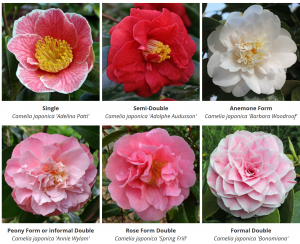 Camellias do come with a few potential pest problems. For information refer to: https://gardeningsolutions.ifas.ufl.edu/care/pests-and-diseases/pests/camellia-pests-and-problems.html
Camellias do come with a few potential pest problems. For information refer to: https://gardeningsolutions.ifas.ufl.edu/care/pests-and-diseases/pests/camellia-pests-and-problems.html
COVID 19 has resulted in many cancelled events. But, you may find a local camellia show to see some the fantastic blooms of many different cultivars. Here are a few options:
December 12, 2020
Pensacola Camellia Club, University of West Florida, Conference Center & Ballroom, 11000 University Parkway, Building 22, Pensacola, FL, Skip Vogelsang, (850) 776-7951, lbv3rd@gmail.com
January 10, 2021
Northshore Camellia Club, Southern Hotel, 428 E. Boston St., Covington, LA, Show Chairman: Hunter Charbonnet, hcherbo1@gmail.com, Contact, Judges’ Chair & Show Reporter: James Campbell, rivercamellia@bellsouth.net, (985) 630-9899,
January 16, 2021
Ozone Camellia Club, Slidell Municipal Auditorium, 2056 Second Street, Slidell, LA, Show Chairman: Jim Campbell, rivercamellia@bellsouth.net, Show Contact: Bruce Clement, (985) 259-5527, bwc555@charter.net, Show Reporter: Stella Allen,
January 23, 2021
Camellia Club of Mobile, The Shoppes at Bel Air, 3299 Bel Air mall.,Mobile, AL 36606, Show Chairmen: Walter Creighton & Larry Heard, larry_heard@bellsouth.net, Show Contact: Larry Heard, (251) 661-9392, Judges’ Chair: Jim Smelley, Show Reporter: Jim Dwyer,
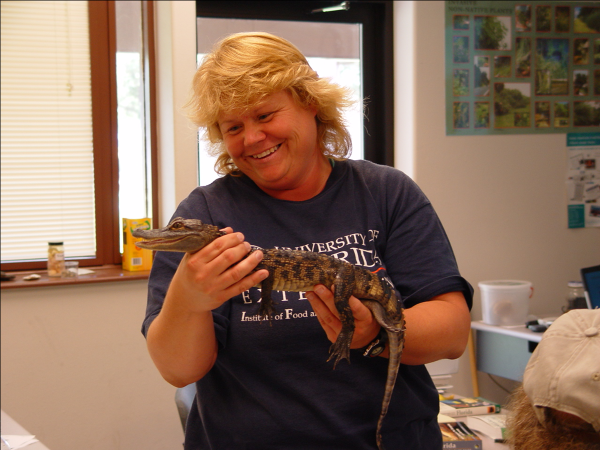
by Sheila Dunning | Oct 21, 2020
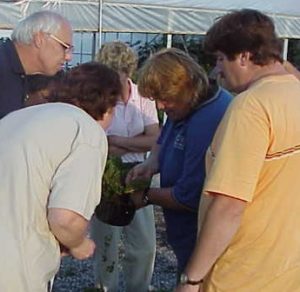
Sheila Dunning is the Commercial Horticulture Agent with the University of Florida Extension Service in Okaloosa County. She holds a Bachelor of Science degree in Environmental Horticulture and a Master of Science degree in Agricultural Education and Communication from the University of Florida, as well as, several industry certifications including International Society of Arboriculture Arborist, Associate Certified Entomologist, and Florida Nursery Growers and Landscape Association Landscape Contractor. Her background is in the nursery industry, of which she was employed for twenty-two years before joining Extension over eighteen years ago.
Sheila’s programs for Green Industry professionals include Best Management Practices; pesticide applicator certification; and environmentally friendly landscaping design, installation and maintenance. In addition, she provides programming in natural resource stewardship through the Florida Master Naturalist Program.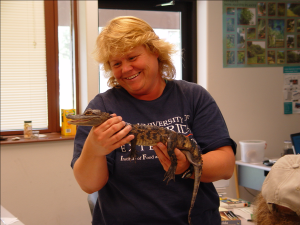
Born in rural Wisconsin, she spent her early childhood as the son and hunting dog that her father never had, going on hunting, trapping and forest adventures. After moving to Brevard County, FL in 1976, Sheila’s interests turned to cultivating plants and rehabilitating local wildlife by working at a local 40-acre wholesale nursery and tending to the many wounded animals that roamed her parents’ home. She never knew what kind of creature she might find in her bed.
Married to an Air Force mechanic, Sheila spent 14 years traveling the world as a military wife, having two children along the way. Playing softball was a family activity, practicing or competing daily for over 22 years. Sheila was the catcher on the Icelandic NATO Forces Woman’s softball team, the European champions from 1986 -1989. She worked in a large greenhouse and florist while overseas, enabling here to learn even more plant material and utilize those Latin night school classes.
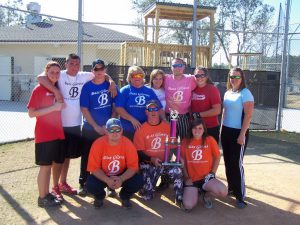 Sheila’s vast knowledge of Florida’s natural resources and cultivated plants was sparked early in life and has continued to grow as she settled into Northwest Florida, working at local retail nurseries and completing her education. Working closely with landscapers, pest control operators and government parks crew to keep up-to-date on plant maintenance, water protection and integrated pest management have become her main daily focus. But, she still finds time to introduce her grandchildren to the wonders of nature.
Sheila’s vast knowledge of Florida’s natural resources and cultivated plants was sparked early in life and has continued to grow as she settled into Northwest Florida, working at local retail nurseries and completing her education. Working closely with landscapers, pest control operators and government parks crew to keep up-to-date on plant maintenance, water protection and integrated pest management have become her main daily focus. But, she still finds time to introduce her grandchildren to the wonders of nature.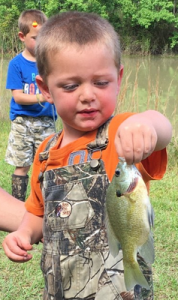
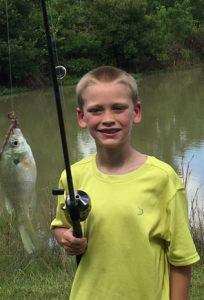

by Sheila Dunning | Oct 7, 2020
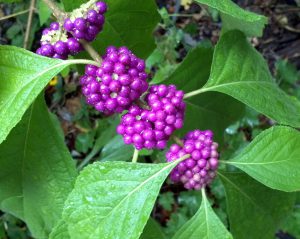
American Beautyberry Photo by: UF/IFAS
Each fall, nature puts on a brilliant show of color throughout the United States. As the temperatures drop, autumn encourages the “leaf peepers” to hit the road in search of the red-, yellow- and orange-colored leaves of the northern deciduous trees. In Northwest Florida the color of autumn isn’t just from trees. The reds, purples, yellow and white blooms and berries that appear on many native plants add spectacular color to the landscape. American Beautyberry, Callicarpa americana, is loaded with royal-colored fruit that will persist all winter long. Whispy pinkish-cream colored seedheads look like mist atop Purple Lovegrass, Eragrostis spectabilis and Muhlygrass, Muhlenbergia capillaris. The Monarchs and other butterfly species flock to the creamy white “fluff” that covers Saltbrush, Baccharis halimifolia. But, yellow is by far the dominant fall flower color. With all the Goldenrod, Solidago spp., Narrowleaf Sunflower, Helianthus angustifolius and Tickseed, Coreopsis spp., the roadsides are golden. When driving the roads it’s nearly impossible to not see the bright yellows in the ditches and along the wood’s edge. Golden Asters (Chrysopsis spp.), Tickseeds (Coreopsis spp.), Silkgrasses (Pityopsis spp.), Sunflowers (Helianthus spp.) and Goldenrods (Solidago spp.) are displaying their petals of gold at every turn. These wildflowers are all members of the Aster family, one of the largest plant families in the world. For most, envisioning an Aster means a flower that looks like a daisy. While many are daisy-like in structure, others lack the petals and appear more like cascading sprays.

Helianthus
So if you are one of the many “hitting the road in search of fall color”, head to open areas. For wildflowers, that means rural locations with limited homes and businesses. Forested areas and non-grazed pastures typically have showy displays, especially when a spring burn was performed earlier in the year. Peeking out from the woods edge are the small red trumpet-shaped blooms of Red Basil, Calamintha coccinea and tall purple spikes of Gayfeather, Liatris spp. Visit the Florida Wildflower Foundation website, www.flawildflowers.org/bloom.php, to see both what’s in bloom and the locations of the state’s prime viewing areas. These are all native wildflowers that can be obtained through seed companies. Many are also available as potted plants at the local nurseries. Read the name carefully though. There are cultivated varieties that may appear or perform differently than those that naturally occur in Northwest Florida. For more information on Common Native Wildflowers of North Florida go to http://edis.ifas.ufl.edu/ep061.
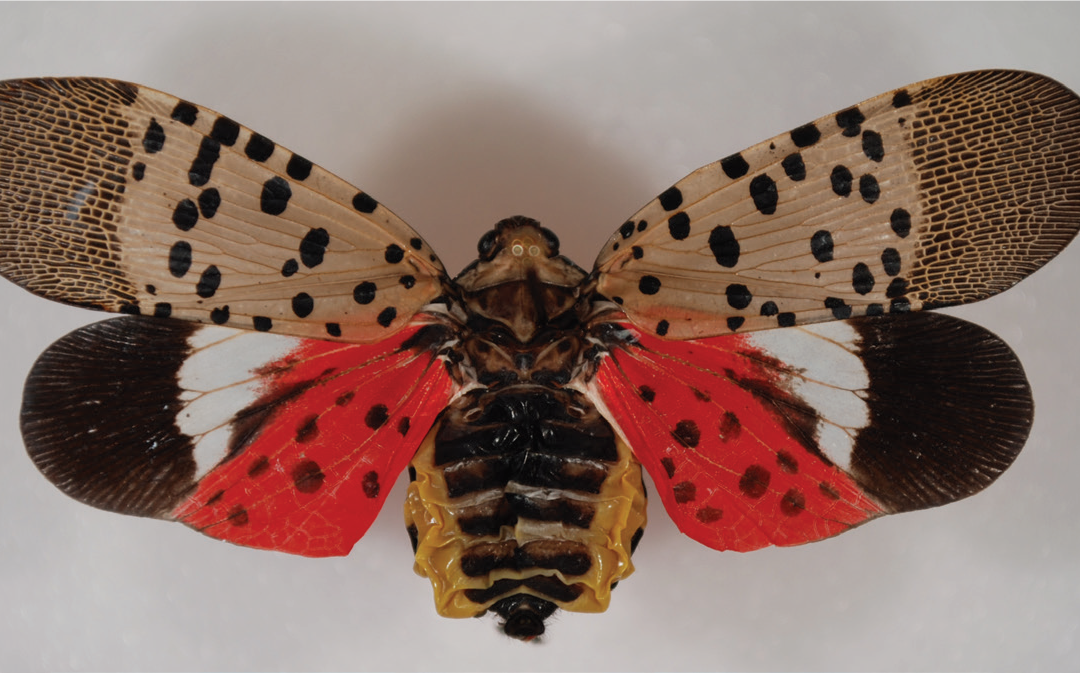
by Sheila Dunning | Aug 31, 2020

Photo from USDA APHIS
Remember last year’s vacation trip? You picked the perfect location, checked into the hotel and made sure to check every mattress corner for bedbugs. Bugs can hide in the strangest places. Now with COVID-19 those people insisting on still taking a vacation are flocking to Northwest Florida. While some are still utilizing hotels, the majority are pulling into the RV park or campground. They are bringing anything and everything anyone could possibly need for the week, from firewood to camp chairs. That way no one will have to go to the store. Somewhere on the vehicle or within all the stuff there may be some hitchhikers, insect stowaways. The problem is that these bugs may be staying even after the human beings head back north. Florida is notorious for invasive species. With 22 international airports and 15 international ports in the state, hundreds of foreign insects are intercepted each month. But, not all the problem creepy crawlers are coming from the south. Many have been introduced to northern states and work their way here.
One to keep an eye open for is spotted lanternfly (Lycorma delicatula). The Asian native was first detected in Pennsylvania in 2014. Since then it has spread to the east and south. While the insect can walk, jump, or fly short distances, the quickest way for the spotted lanternfly to relocate is to lay eggs on natural and man-made surfaces. Some of those egg masses may fall off and get left at the park. Next spring after the eggs hatch the nymphs will begin feeding on the sap of numerous plants, often changing species as they mature. Host plants include grape, maple, poplar, willow and many fruit tree species.
Nymphs in the early stages of development appear black with white spots and turn to bright red before becoming adults. At maturity spotted lanternflies are about 1 ½ inches wide with large colorful, spotted wings.
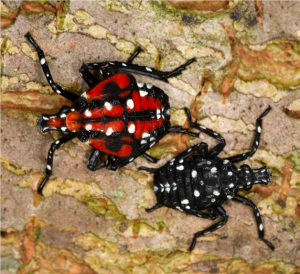
Photo from USDA APHIS
At rest their forewings are folded up giving the lanternfly a dull light brown appearance. But when it takes flight its beauty is revealed. The bright red hind wings and the yellow abdomen are very eye-catching. Remember, in nature bright colors are often a warning. Though spotted lanternflies are attractive, they pose a valid threat to native and food-producing plants. The adults feed by sucking sap from branches and leaves. What goes in must come out. Sugar in, sugar out. Spotted lanternflies excrete a sticky, sugar-rich fluid referred to as honeydew. Black sooty mold often develops on honeydew covered surfaces.
Spotted lanternflies are most active at night, steadily migrating up and down the trunk of trees. During the day they tend to gather together at the base of the plants under a canopy of leaves. So, you may need your lantern (or head lamp) to locate them. If you find an insect that you suspect is a spotted lanternfly, please contact your local Extension office of the Florida Department of Agriculture and Consumer Services Division of Plant Industries.
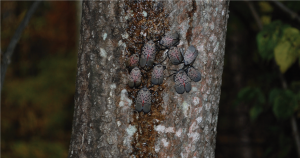
Photo by USDA APHIS
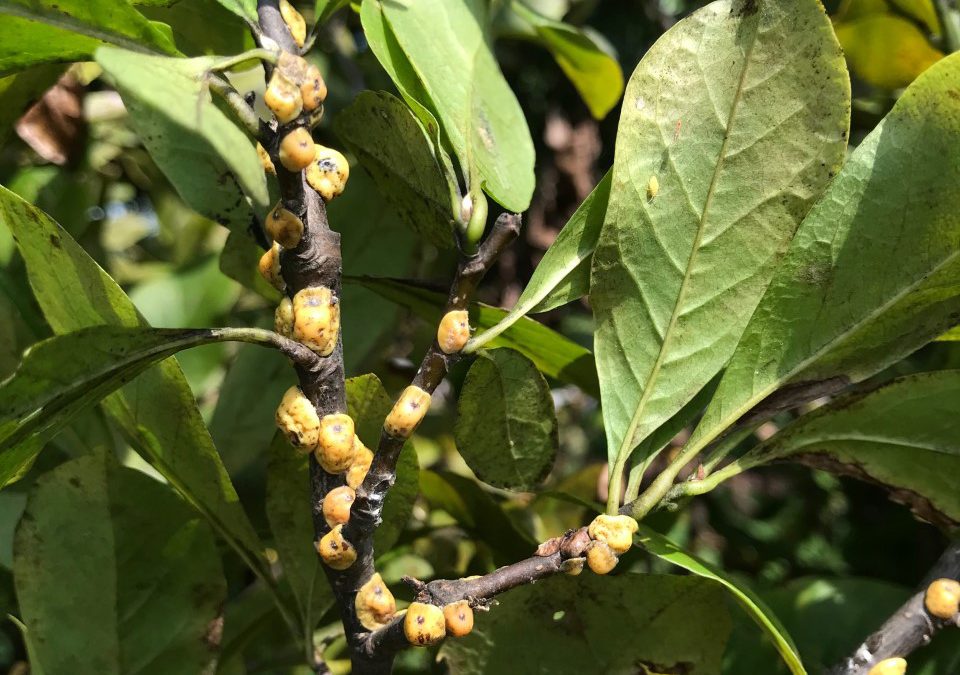
by Sheila Dunning | Jul 30, 2020
Do you notice a large number of bees or wasps visiting your magnolia tree? Do you see “bumps on the twigs”? Are the leaves and branches turning black? It is probably Magnolia or Tuliptree scale.
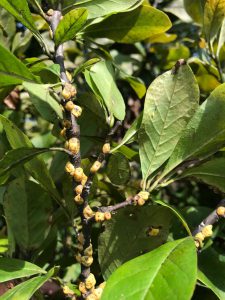
Photo by: Rebecca Bolestra
These scale belongs to a group of insects referred to as soft scales. Scale insects feed by inserting their piercing-sucking mouthpart into the plant’s vascular system and removing sugar and water from the tissue. As the insects feed the fluids become concentrated in the gut of the scale, forcing them to excrete a clear, sticky liquid called honeydew. The honeydew drips onto the leaves, stems and anything else below. Honeydew serves as a growth media for sooty mold, the thin layer of black fungus that forms on the surface. The honeydew is a food source for other insects, like bees and wasps. But, the sooty mold prevents sunlight from reaching the leaf surface, preventing photosynthesis from occurring.
Scales are identified by their body covering. Magnolia scale (Neolecanium cornuparum) is one of the largest soft scale, measuring up to ½ inch in diameter. They range from pink-orange to dark brown in color and are often covered with a white wax at maturity. Tuliptree scale (Toumeyella liriodendri) is a similar appearing scale that can infest magnolia species. But, it does not form the white wax.
Magnolia and Tuliptree scale reaches maturity in August with one generation per year. The female lays her eggs, which hatch internally and form crawlers that move from under the body covering and migrate to the underside of small twigs, where they will spend the winter. Once settled in, the young scales begin to feed and never move again, growing larger in the same spot.
Now is the time to take action. For small trees, the scales can be removed by hand with a soft brush. Horticultural oil will smother adults and crawlers, if the trees to be treated are larger or time is limited. Systemic insecticides can be applied for lasting effects. Imidacloprid is a pesticide that can be applied as a soil-drench, reducing the potential for harm to pollinating insects. In the fall, insecticidal soap can be applied to control the crawlers that hatched. Plan on treating the tree again next year. Scale population suppression usually requires at least two years of pest management. For more information on scale insect management go to: https://edis.ifas.ufl.edu/pdffiles/MG/MG00500.pdf
 Camellias do come with a few potential pest problems. For information refer to: https://gardeningsolutions.ifas.ufl.edu/care/pests-and-diseases/pests/camellia-pests-and-problems.html
Camellias do come with a few potential pest problems. For information refer to: https://gardeningsolutions.ifas.ufl.edu/care/pests-and-diseases/pests/camellia-pests-and-problems.html














